Read this post on TravelFeed.io for the best experience
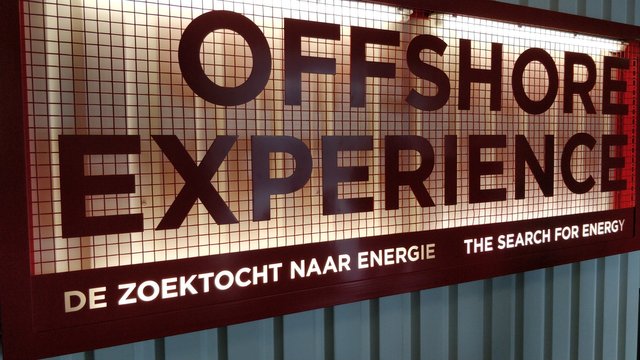
A couple of summers ago, our little family visited the Maritime Museum in Rotterdam. Rotterdam is THE port hub for Europe, so it is quite fitting that a large maritime is situated in this busy city. I will do a post a different time about the actual museum... but this time, I just wanted to write about the specific featured exhibition that was showing at the time.
The "Offshore Experience" exhibition was a limited time event where you are treated to a bit of a hands on learning experience about working and living on an offshore energy platform. It seems to be a pretty dangerous and somewhat lonely sort of experience as viewed by an outsider, but I know absolutely nothing about it! After completing this exhibition with my older daughter, I knew a little bit more... it is always fascinating to get a glimpse into another life.
For those who are a bit scared of the Dutch... have no fear, in The Netherlands, most of the special and regular exhibits in most of the museums in major cities are in both English and Dutch. The exhibition is definitely worth a visit if is visiting a museum near you!
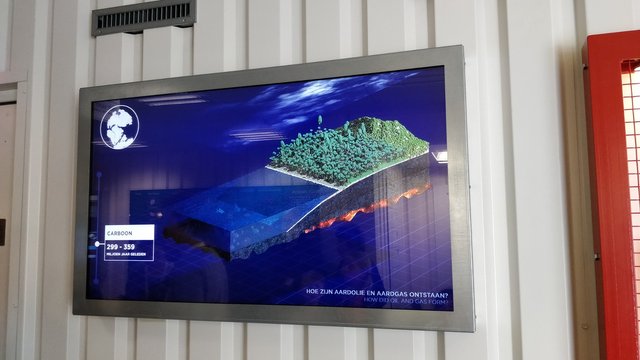
There is a limited number of spaces inside the exhibition due to the hands-on nature of the activities. Too many kids would mean that there would be lots of people missing out on trying all the activities. However, whilst you are waiting around outside, there are lots of interesting informational exhibits where you can read about how oil deposits form.
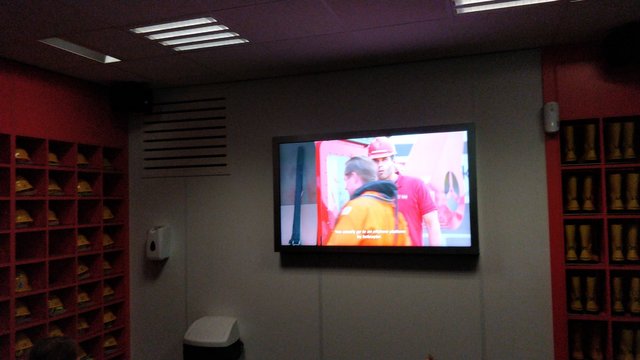
When you first enter the special exhibition, you are treated to a pretty full on safety video... similar in style to a real one, but told more in a story-like manner.
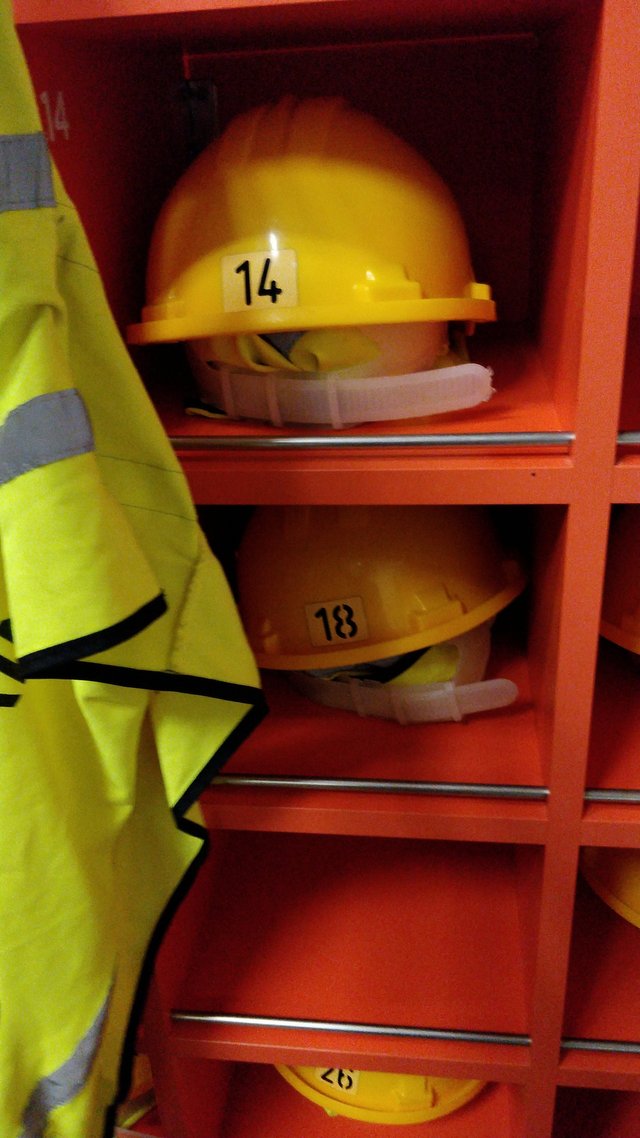
Before going in, you are required to don a safety helmet and a hi-vis vest. It's all for show and for the kids... to get in the feel of what people would ordinarily need to wear at a minimum (I suspect that life vests and that sort of thing are probably required!). Adults need to also do the same!
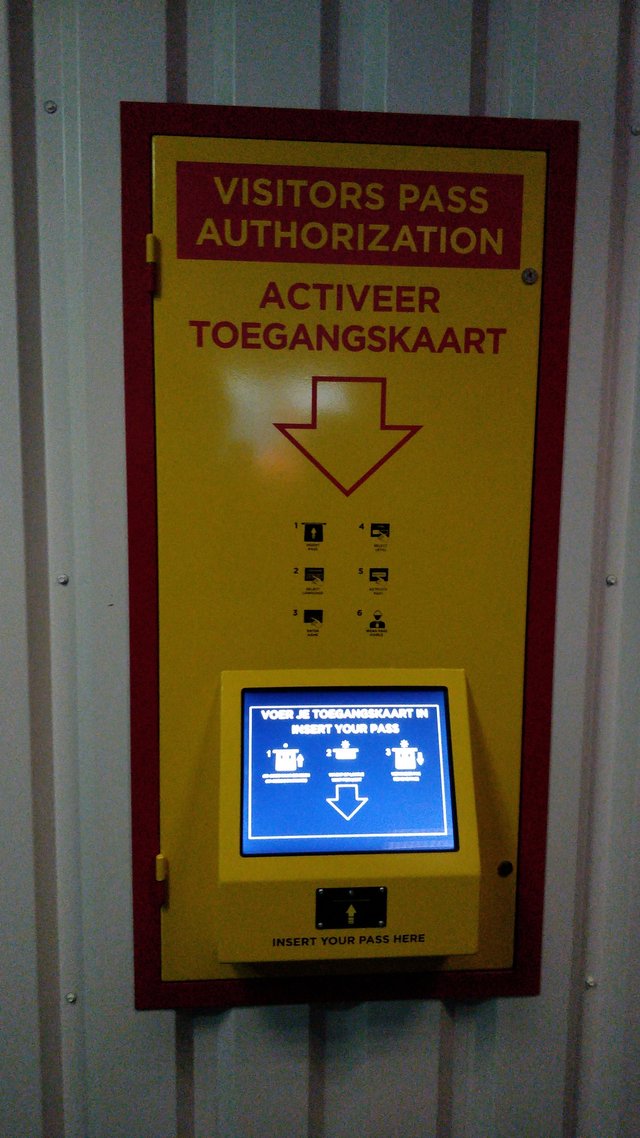
At the beginning of the exhibit, you are required to have a personal "ID card". Just a card that you have to wear on your lanyard. It's for tracking the progress on the activities and for limited the number of people in the exhibition. You need to check in with the ID card, giving your name so that the systems can give you some personalisation in feedback.
Swipe the card, and you are allowed to enter through a heavy hulled door!
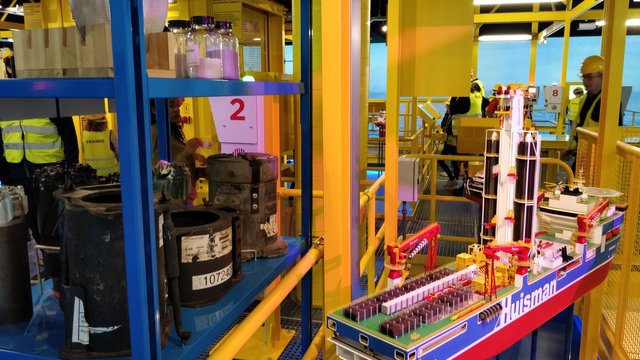
Coming into the exhibit, you climb some stairs to arrive at a metal platform that resembles a very much scaled down version of an oil platform. Scattered throughout are interactive displays and activities in addition to the more traditional display cabinets of artifacts.
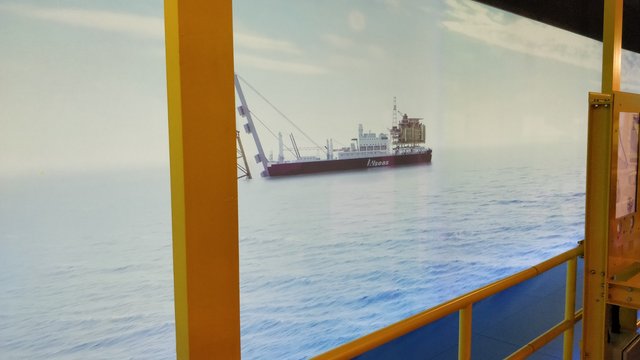
In a nice touch, there is a video panorama all around the walls, which gives the impression that you are out in the middle of ocean. Nothing too dramatic, just calm seas... but it really gives that impressive sense of space at sea.
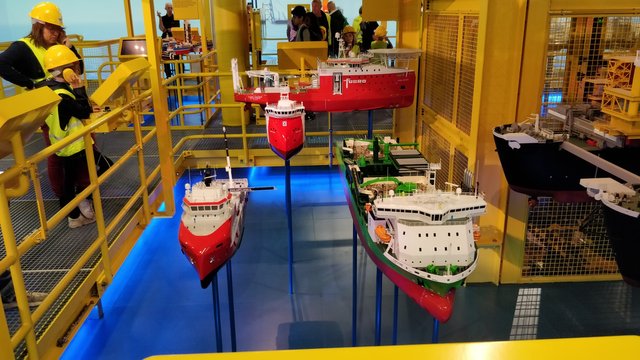
I really enjoyed the scale models of the various tankers and ships that would come to supply the platform or take away oil.
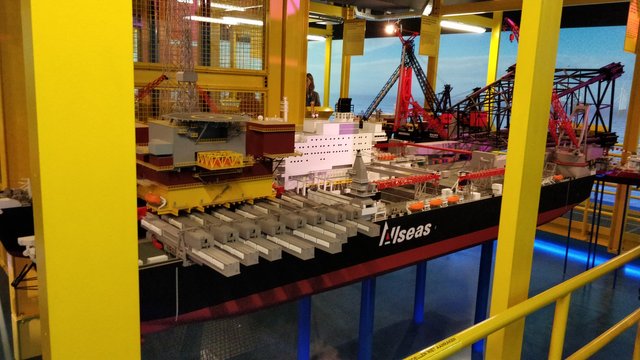
... some of them were pretty impressively large! I'm sure that most of the oil tankers are actually quite big!
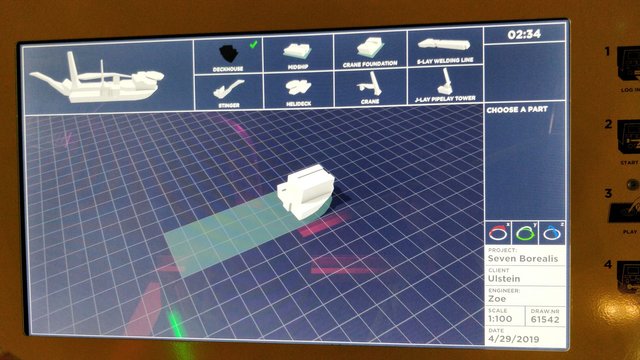
One of the first displays was a sort of jigsaw like game where you put the various pieces of an oil tanker together whilst reading about each part and what it does. This was one of the simpler ones, the range of skill and interaction required for the various stations range from primary to secondary school sorts of ability.

Not only ships... but scale models of oil platforms as well! I would have liked it if there was more detailed information about the various bits of the platforms/ships.
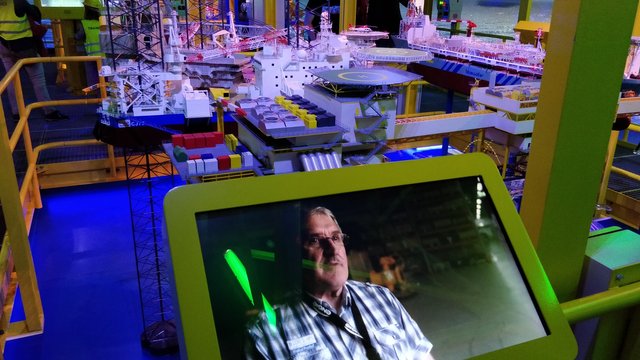
In the style of most modern museums, there were video interviews to convey information in addition to the reading materials. I do like the reading materials, but in the end, if you have a good interview, it does seem to hold the attention of kids better... in addition to being able to update it with a new more up to date interview.... plus, it gives my Dutch a bit of a workout!
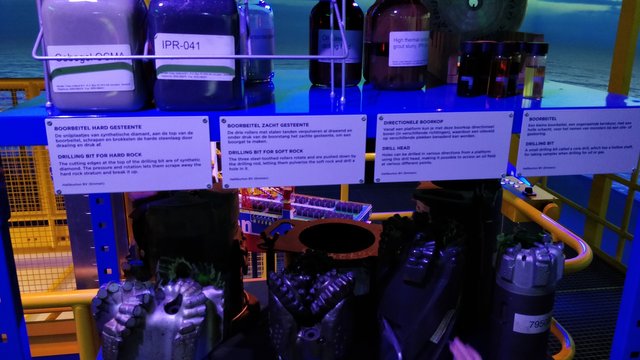
Among the artifacts in the display cases were some of the drill heads that the platforms use. I was expecting something a lot larger...

A oil tanker "driving" (what do they call that when you drive a boat?) simulator... trying to keep the oil tanker on course through rough seas and wind. Quite hard for a little one to do!
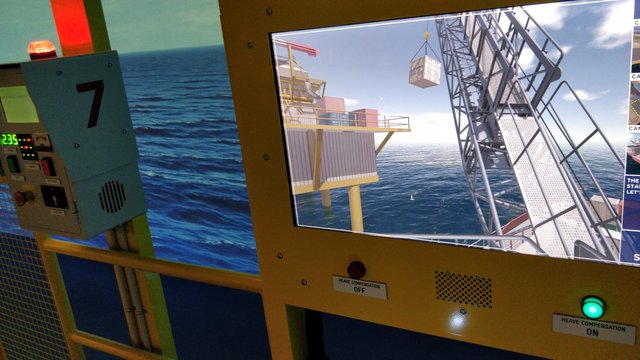
... and a loading simulator with a crane and in rolling seas! Again, quite a bit trickier than you would expect!
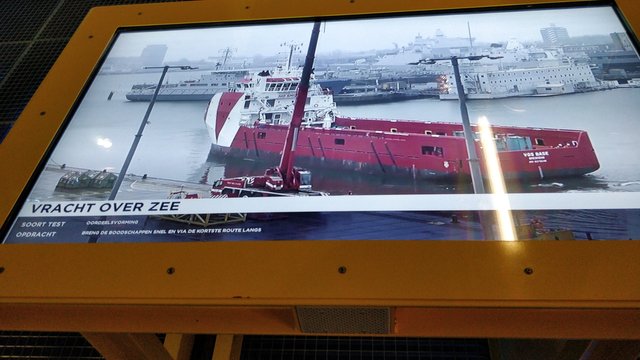
Every activity had an introductory video which gave some interesting information and also some basic instructions for how to complete the activity. Each station was constructed as a sort of game that had some relevance to the part of the platform life and work being described in the video. Sometimes more directly relevant... other times in the form of a quiz or puzzle.
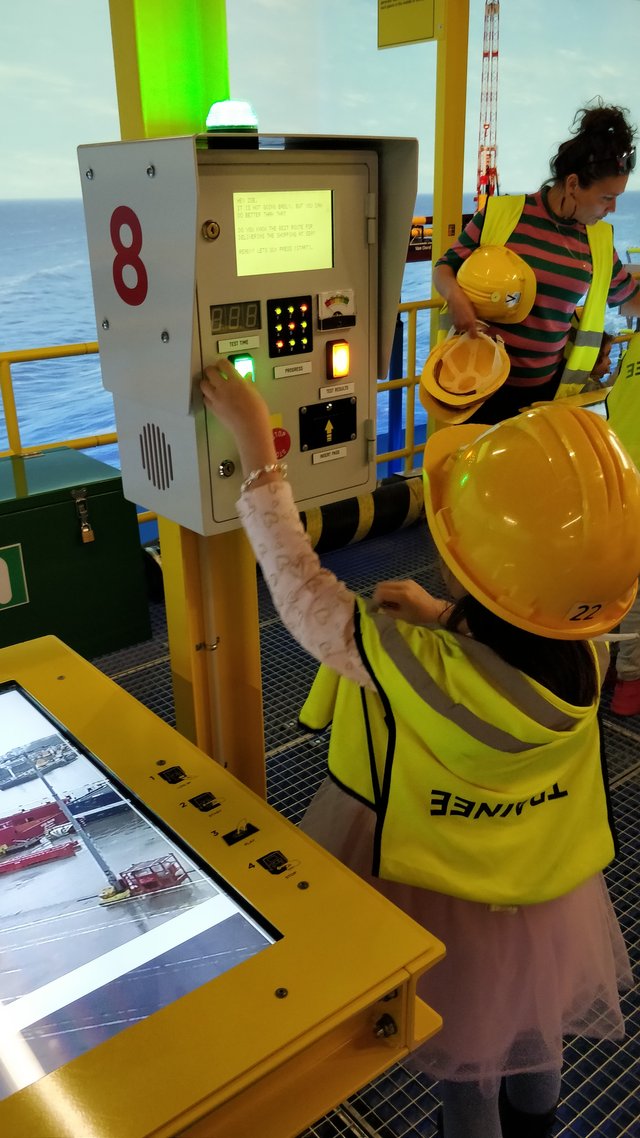
Each station would also track your progress and score at each activity. Not 100% sure that I agree with this sort of gamification of the activities and learning, but it is something that seems to keep the kids occupied and engaged.
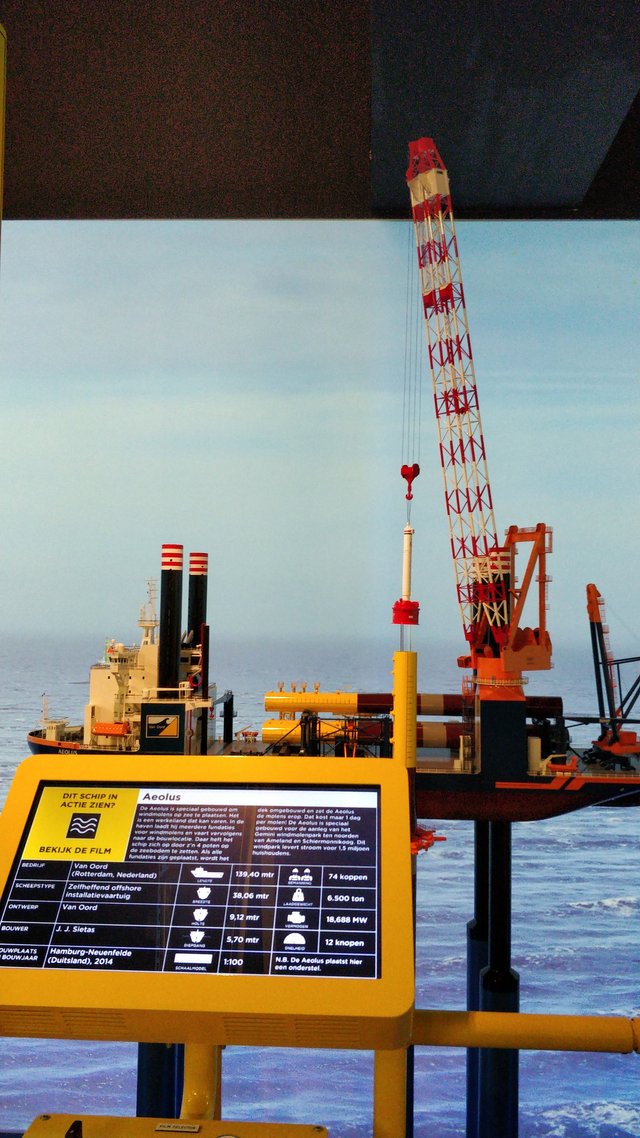
Around the edges of the platform were more detailed information about the various ships and platforms that I ended up being quite interested in. Something to read about whilst your kid is struggling with loading a platform in rolling seas!
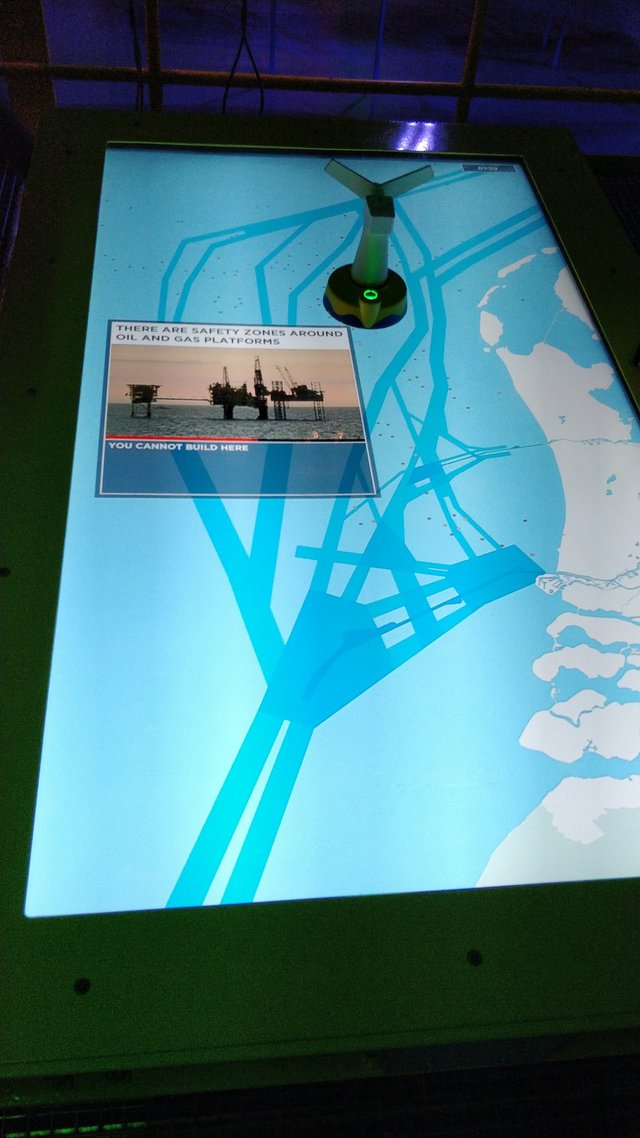
A placement puzzle game formed the basis of a renewable energy (sea wind farm) education station. How to keep it away from shipping lanes, sight lines and various other interests that might need to be negotiated before plonking down a wind farm in the middle of the sea!

One of the more popular games was the helicopter landing game. You would have a paddle in each hand and would assist a helicopter in trying to land on a helipad on the oil platform. Quite a bit trickier for kids to do... and there were quite a number of hilarious crashes!
Congratulations @bengy! You received the biggest smile and some love from TravelFeed! Keep up the amazing blog. 😍 Your post was also chosen as top pick of the day and is now featured on the TravelFeed.io front page.
Thanks for using TravelFeed!
@smeralda (TravelFeed team)
PS: You can now search for your travels on-the-go with our Android App. Download it on Google Play
Downvoting a post can decrease pending rewards and make it less visible. Common reasons:
Submit